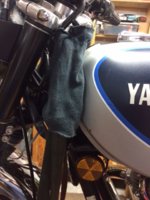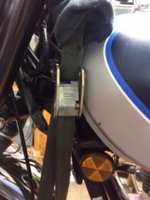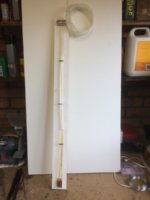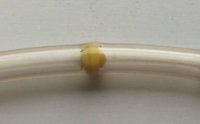I recently replaced my alternator rotor with an exchange off-the-shelf rewound rotor. I was curious to see if the TDC marks would still line up correctly so made a simple tool to allow me to find TDC:
Step 1: Took an old spark plug and cut off the earth strap. Then placed the plug in the lathe and trimmed off the shoulder that holds the porcelain in placed and knocked the porcelain out by gently tapping from the spark gap end.
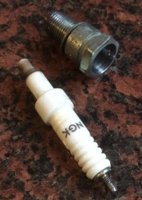
Step2: Bored the metal body out a little to accomodate my calipers and tapped and fitted a 4mm brass screw.
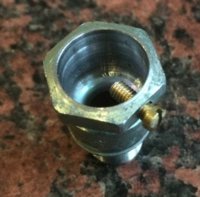
Step3: Securely screwed the plug body into the spark plug hole and inserted the calipers. Tightened the brass screw gently so the calipers would not shift easily. Rotated the crank close to TDC and inserted the caliper until is gently touched the top of the piston. I noted the depth, withdrew the calipers then rotated the crank slightly and took another reading. After several readings and minor rotations I found TDC and it lined up perfectly with the TDC timing mark for the old rotor. The following photo shows the assembly minus the engine.

Step 1: Took an old spark plug and cut off the earth strap. Then placed the plug in the lathe and trimmed off the shoulder that holds the porcelain in placed and knocked the porcelain out by gently tapping from the spark gap end.

Step2: Bored the metal body out a little to accomodate my calipers and tapped and fitted a 4mm brass screw.

Step3: Securely screwed the plug body into the spark plug hole and inserted the calipers. Tightened the brass screw gently so the calipers would not shift easily. Rotated the crank close to TDC and inserted the caliper until is gently touched the top of the piston. I noted the depth, withdrew the calipers then rotated the crank slightly and took another reading. After several readings and minor rotations I found TDC and it lined up perfectly with the TDC timing mark for the old rotor. The following photo shows the assembly minus the engine.

